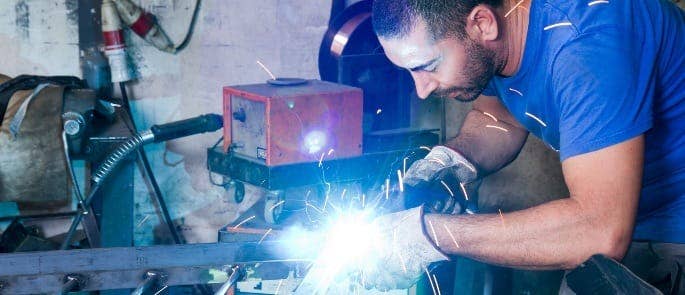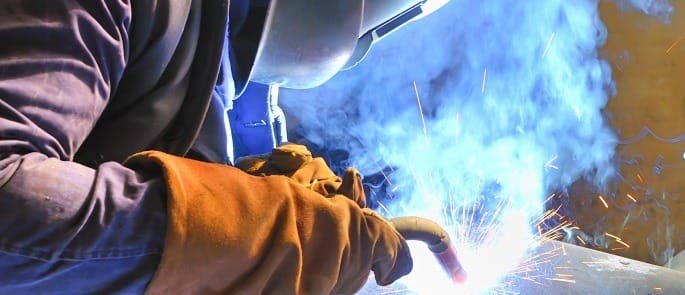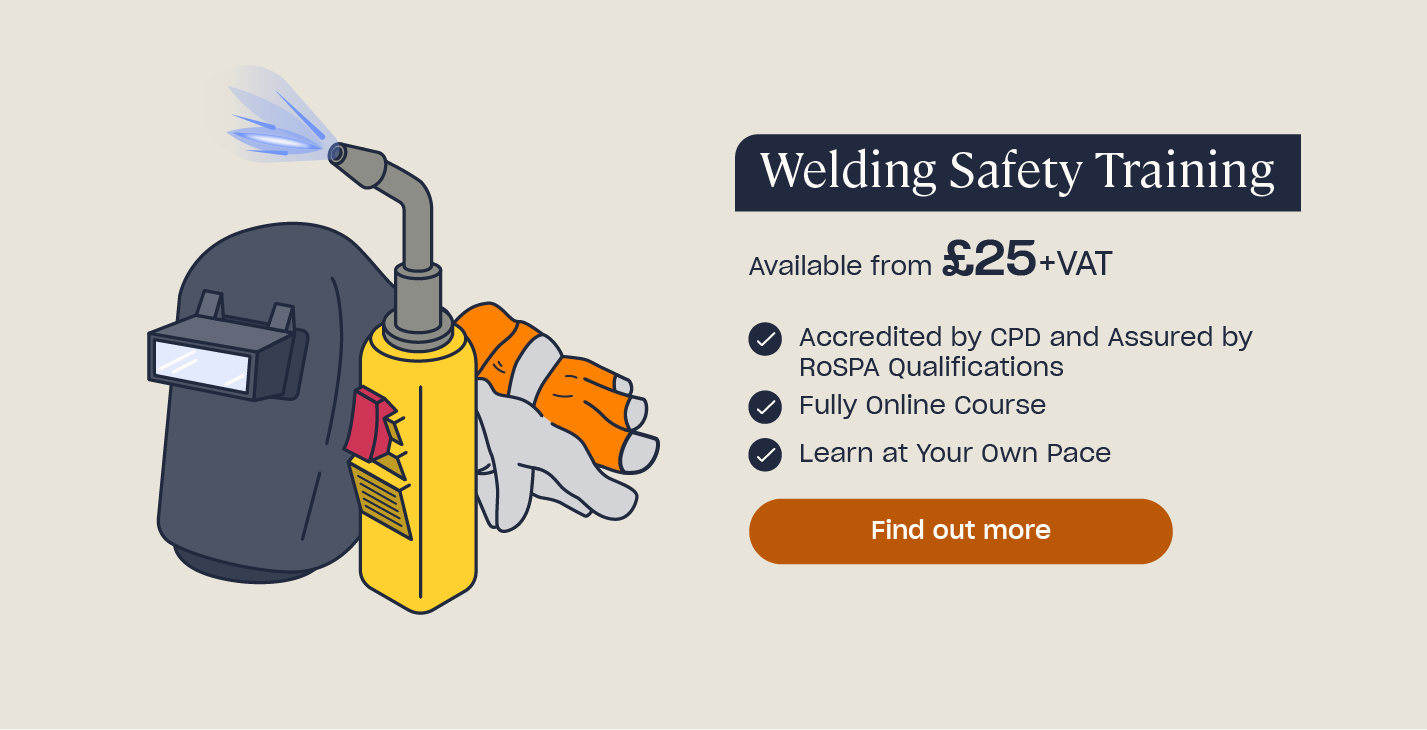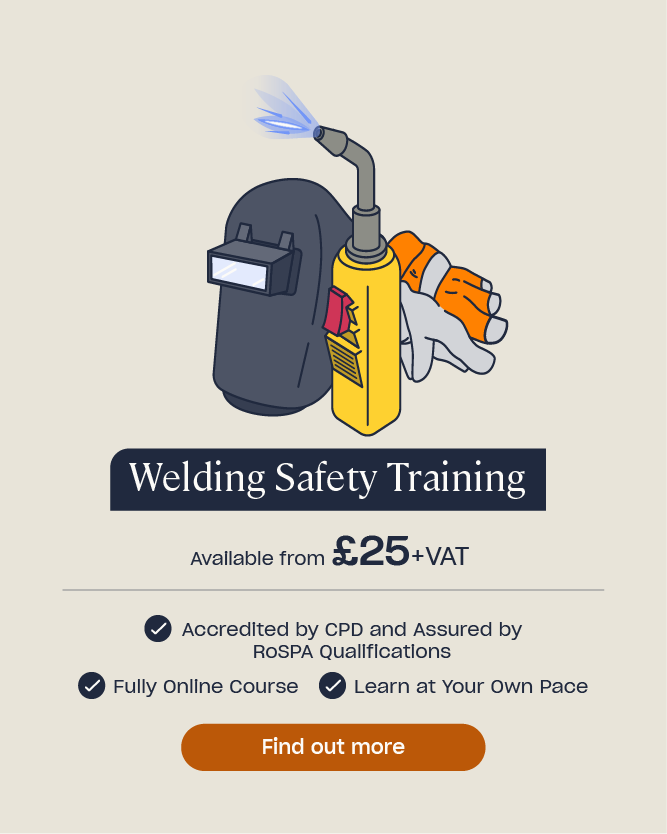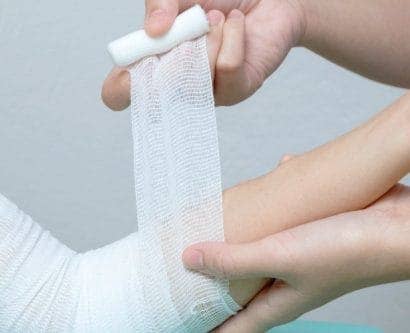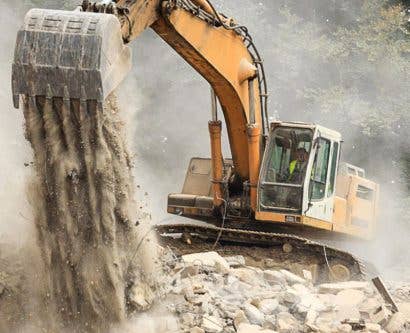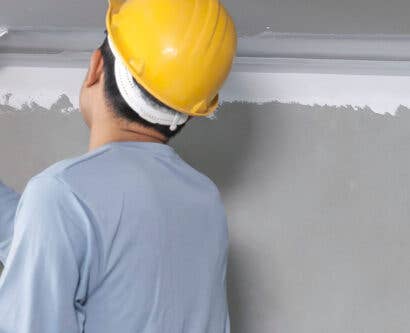Welding Hazards in the Workplace: Safety Tips & Precautions
Welding Safety Hazards
Welding operations present several hazards to both those undertaking the activity and others in the vicinity. Therefore, it’s important that you are aware of the risks and hazards welding poses, and understand what precautions you can take to protect yourself.
Some examples of the hazards associated with welding are outlined below. It’s important to note that this is not an exhaustive list of welding hazards.
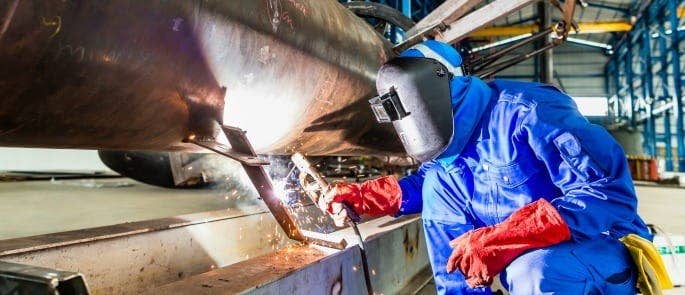
Exposure to Fumes and Gases
Undertaking welding activities will expose you to invisible gaseous fumes, including ozone, nitrogen oxides, chromium and nickel oxides, and carbon monoxide which can easily penetrate into your lungs. Depending on the gas or fume, the concentration, and duration of your exposure, the resultant damage can be severe.
There is no minimum safe exposure limit for welding fume. Employers are legally required to effectively control exposure to all types of welding fume, including that from mild steel welding.
All organisations carrying out welding activities must ensure effective engineering controls are in place and correctly used to suitably control welding fumes, including when welding outside. Employers must also provide welders with adequate and suitable respiratory protective equipment (RPE), if engineering controls are not sufficient on their own, to control all fume exposure. More information on control methods will be discussed later in this article.
Illnesses caused by welding fumes and gases include:
- Pneumonia. Regular exposure to welding fumes and gases can result in a lung infection which could then develop into pneumonia. While antibiotics can usually stop the infection, severe pneumonia can result in hospitalisation, serious illness and fatalities.
- Occupational asthma. Chromium oxides and nickel oxides produced by stainless steel and high nickel alloy welding can both cause asthma.
- Cancer. All welding fumes are internationally considered ‘carcinogenic’.
- Metal fume fever. Welding or hot work on galvanised metal and high steel weld fume exposure can often result in ‘flu-like’ symptoms, which are usually worse at the start of the working week. You might have heard that drinking milk before welding will help you avoid developing metal fume fever, but this is a myth.
- Throat and lung irritation, including throat dryness, tickling of the throat, coughing and tight chests.
Fires and Explosions
Fires and explosions are two of the main hazards associated with welding and other hot work activities. Where these are not effectively managed, severe consequences can occur, including serious or fatal injuries and destruction of property.
Electric Shock
During the arc welding process, live electrical circuits are used to create a pool of molten metal. Therefore, when welding, you are at risk of experiencing an electric shock. Electric shock is the most serious hazard posed by welding and can result in serious injuries and fatalities, either through a direct shock or from a fall from height after a shock. You are also at risk of experiencing a secondary electric shock should you touch part of the welding or electrode circuit at the same time as touching the metal you are welding.
You are particularly at risk if you work in electrically hazardous conditions. These include welding:
- In damp conditions.
- While wearing wet clothing.
- On metal flooring or structures.
- In cramped conditions where you are required to lie, kneel or crouch.
Noise Hazards
When carrying out welding activities, you are likely to be exposed to loud, prolonged noises. A loud noise is considered to be above 85 dB(A), and welding activities such as flame cutting and air arc gouging can produce noise levels of over 100 dB(A). This can be very damaging to the ears and can result in hearing impairment.
Regular or immediate exposure to loud noises can cause permanent noise-induced hearing loss.
Noise-induced hearing loss can have the following side effects:
- Ringing in the ears, known as tinnitus.
- Occasional dizziness, known as vertigo.
- Increased heart rate.
- Increased blood pressure.
Exposure to UV and IR Radiation
Looking at the intense bloom of UV light produced when welding, without appropriate PPE or welding curtains, can result in a painful and sometimes long-lasting condition called arc-eye. Many factors can affect the severity of a flash burn injury, such as distance, duration and the angle of penetration. Long-term exposure to arc flashes could also potentially result in cataracts and lead to a loss of vision.
Other forms of eye damage include:
- Foreign bodies entering the eye, including grit, sparks and dust.
- Particulate fumes and gases, which could lead to conjunctivitis.
Burns
The combination of high-temperature welding arcs, UV rays and molten metal means you are susceptible to severe burns when welding. These burns can affect the skin or eyes and can be very serious. They can also happen very quickly.
Burns usually occur when welders think they can skip taking precautions for a few quick welds. This is bad practice. If you follow our precautions outlined below, you should be able to prevent burns.
Need Welding Safety Training?
Our Welding Health and Safety Training Course raises awareness of the risks presented by welding operations. It helps you to understand the risks that must be avoided and provides knowledge of how to carry out your welding activities safely.
Welding Safety Precautions
Ensuring high levels of safety is vital when undertaking any welding activity. Your employer has a legal responsibility to ensure that the risks in your workplace are assessed, controlled and monitored. They must ensure that a risk assessment is undertaken for your workplace and work activities, either by themselves or another competent person.
The information below provides more information on some of the control measures that may be used in your workplace. This is not an exhaustive list.
Make proper use of engineering controls and respiratory protective equipment (RPE)
As of their 2019 Safety Alert, the HSE has strengthened its enforcement expectation for all welding fumes, including mild steel welding. Employers must ensure that suitable controls are in place for any welding activities, no matter the activity duration.
Employers must enforce suitable engineering controls, such as Local Exhaust Ventilation (LEV), for all indoor welding. General ventilation is not an adequate control to reduce exposure to welding fumes. Where engineering controls alone cannot adequately control exposure, suitable RPE must be provided. RPE must be provided to workers welding outdoors to protect them from exposure.
The HSE will no longer accept any welding undertaken without suitable exposure control measures in place, regardless of duration.
All welders must be appropriately instructed and trained on any control measures, and must be competent in their duties. As an employee, you must comply with any control methods your employer enforces and to work in line with the training and instruction provided to you.
Further information on engineering controls, including LEV systems, can be found in our training course: Welding Health and Safety Training Course
Always Wear Appropriate PPE
Your employer or manager has a duty to provide you with appropriate Personal Protective Equipment (PPE). The PPE you receive will likely include:
- Respiratory protective equipment (RPE). Where engineering controls alone are not sufficient to suitably control exposure to welding fumes, RPE must be provided. Anyone welding outdoors must wear RPE when welding. Your respirator must be suitable for the work being undertaken, for your specific requirements, and must be thoroughly examined by a trained individual at suitable intervals.
- Welding helmets with side-shields. Welding helmets protect you from UV radiation, particles, debris, hot slag and chemical burns. It’s important that you wear the right lens shade for the work you are carrying out. Follow the manufacturer’s guidelines and gradually adjust the lens filter until you have good visibility that does not irritate your eyes. You should also use a fire-resistant hood under your helmet to protect the back of your head. You must always wear your helmet when welding and when in the vicinity of another welder. While the intensity of the radiation produced decreases the further you are from a welding arc, those less than 10 metres away are still susceptible to arc-eye. Therefore, it’s important that you remain behind welding curtains or wear the correct PPE, even if you aren’t the worker carrying out the welding operation.
- Fire resistant clothing. Fire resistant clothing protects you from heat, fire and radiation created in the welding process and shields you from burns. It should have no cuffs, and pockets must be covered by flaps or taped closed. You should not use synthetic clothing. Instead, opt for leather and flame-resistant treated cotton. You must not roll up your sleeves or trousers as this will leave you susceptible to molten metal or sparks getting caught in the folds, which could potentially lead to severe burns. You should also never tuck your trousers into your work boots.
- Hearing protection. Hearing protection protects you from noise hazards. It’s important you wear ear protection that is appropriate for the noise created in your workplace, and use fire resistant ear muffs if there is a risk of sparks or splatter entering the ear.
- Boots and gloves. Insulated, flame resistant gloves and rubber-soled, steel toe-capped safety shoes shield you from electric shocks, heat, fire, burns and falling objects.
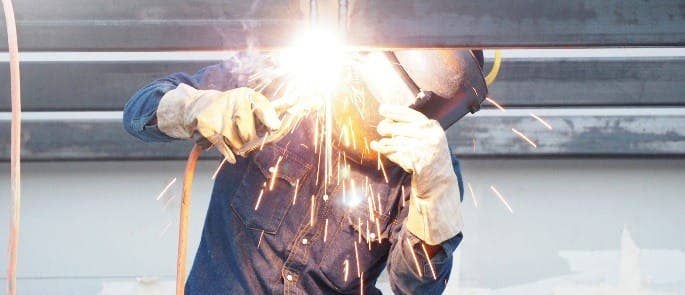
Follow any training, communication and housekeeping information your employer has provided
Employers have a legal duty to ensure their workers are effectively trained in their duties. They must also ensure that employees and, where necessary, those in the vicinity are effectively briefed.
Any relevant information about the equipment you use, or your work activities, must be communicated to you and training must be provided where necessary. This includes information on the risk assessments and control measures used in your workplace.
You have a legal responsibility to work in a way that ensures your health and safety and the health and safety of those around you. It’s essential that you:
- Work in line with the training and instruction provided to you by your employer.
- Cooperate with your employer in any matters relating to health and safety.
- Properly use any control measures enforced as a result of the workplace risk assessment.
Carry out the required pre-welding checks
You should carry out visual checks of your welding set before every use to ensure that the welding and current return cables are undamaged, all connectors are clean, undamaged and correctly rated for the required current, and that the conductor is thick enough to carry the current safely.
Information on how to carry out these checks should be provided to you as part of the training and information you receive from your employer.
You should never use welding cables, plugs, clamps or torch/electrode holders with damaged insulation.
Cooperate with any health surveillance requirements
Generally speaking, any employee exposed to welding fumes should have regular health surveillance. Health surveillance is essential for ensuring that ill health effects are detected early, and can help employers to identify areas where their control measures may be insufficient. You should cooperate with any health surveillance requirements your employer enforces.
In this article, we have identified and explained many of the hazards posed by welding activities. It’s vital to follow all the controls enforced by your employer when undertaking your work activities, to ensure that you can carry out your role safely.
What to Read Next:
- What is Arc Eye? A Guide to the Dangers of Arc Welding
- Welding Safety Quiz
- Understanding the Marking System for Abrasive Wheels
- 15 Workshop Hazards and How to Avoid Them
- What are the Hazards of Grinding?
- What is Hot Work and Do I Need a Permit?
- Key Welding Terms Glossary
- Welding Safety Training


